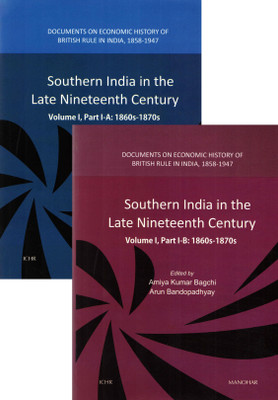Southern India in the Late Nineteenth Century: Vol. I, Part I-A & B: 1860s-1870s (Documents on Economic History of British Rule In India, 1858-1947)(English, Hardcover, Arun Bandopadhyay (eds), Amiya Kumar Bagchi)
Quick Overview
Product Price Comparison
This volume is part of the Project of Indian Council of Historical Research (ICHR) on documents pertaining to the economic history of British rule in India covering the period 1858-1947. The present volume contains a wide range of economic documents for southern India roughly covered by the Madras Presidency of British India in the late nineteenth century. The volume is divided into two parts, Part I (1860s-1870s) and Part II (1880s-1890s). Documents in Part I (both A & B) are collected from a wide spectrum of human activity in southern India. They include materials from diverse fields such as agriculture, forestry, population, public health, education and sanitation, in each of which the British Raj was involved in collecting information and directing the courses of development in more than one sense. It is widely believed that the high land revenue regime attendant with tortures in the second quarter of the nineteenth century came to an end in Madras Presidency from the 1860s onwards, while the agricultural depression of the earlier period had supposedly ended. This belief is confronted by the documents presented in this volume. The documents, however, suggest that a high land revenue demand still continued in many parts of the Madras Presidency along with the application of coercive measures in the 1860s and 1870s, while agricultural prices were widely fluctuating. Public health was in a dismal situation, and there were frequent outbreaks of cholera, small pox and fever. There was some improvement in the realm of education but even elementary education mostly depended on private initiatives. Scarcity and famine were closely connected. Documents included in this volume bear testimony to all these. The volume will be an important resource for students of the history of economic and human development of India.

